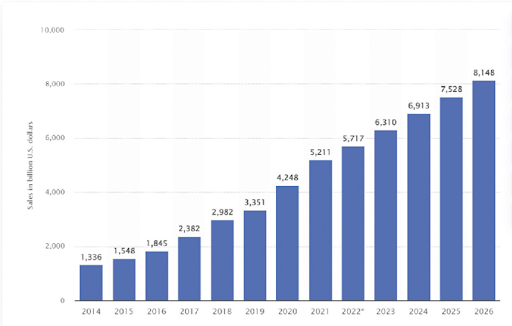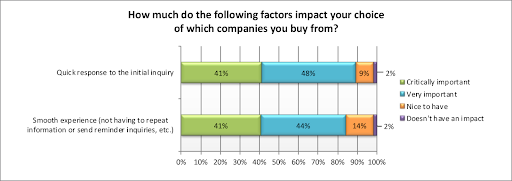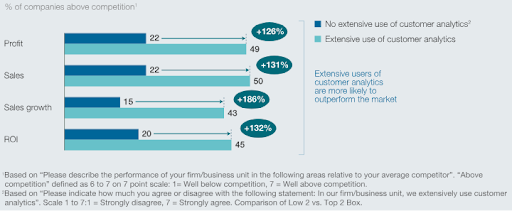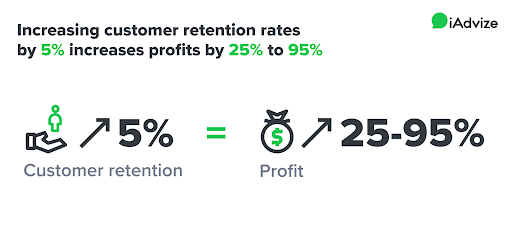How Digital Transformation is Transforming Customer Experiences
Technology has presented a new approach to the way organizations engage their customers. Digital Technology in customer experience goes beyond everything to make sure the experiences are smooth, relevant, and efficient each time they interact with an organization.
– 20 mins

Deloitte stated in their report that businesses that focus more on the digital engagement of the customer get a 45% growth in their revenues in comparison to their counterparts that are not keen on this factor. From recommendation engines to mobile application design, companies are using technology to increase customer loyalty.
In this blog post, we will take a closer look at how digital transformation is changing the customer experience landscape with examples, best practices, and trends to watch.
What Does Digital Transformation Mean for Customer Experience?
Digital transformation with the help of advanced technology is now being adapted across several businesses. It revolves around managing working processes, and business relationships, and exceeding customer expectations. Today, companies are going beyond just customer service; they aim to develop seamless integrated experiences.
The Changing Expectations of Customers
Customers now crave shorter response times and targeted customer engagement. They expect companies to know what they need before they do, solve problems before they arise, and provide consistent experiences across numerous touchpoints. Another survey by PWC shows that 73% of customers believe that their experience with a brand is as important as the brand they choose.
Example: Sephora utilizes both Artificial Intelligence (AI) and Augmented Reality (AR) to provide makeup suggestions and to make virtual trials. These innovations improve customer interactions as they raise the bar on the expectations of the retail business environment.
The Role of Digital Technology in Redefining Customer Experiences
1. Multi-Channel Expectations
Customers are not limited to using a single channel to interact with the business. They have high demands as to how they want to interact on-site, in applications, social networks, emails, and even physical stores. A digital presence fosters the integration of these platforms with an opportunity to deliver enhanced messages, branding, and service.
For example, My Disney Experience by Disney is tightly connected to the actual park and allows managing reservations online and in real time. Moreover, interactive marketing channels make it easier to reduce the gap between the business and the customers and thus increase satisfaction.
Salesforce has further noted that 76% of consumers expect an organization to engage them in a coordinated fashion across departments. It indicates how multi-channel communication is important and shaping everyone’s experience.
2. Digital Engagement
Digital Technology has brought changes in how companies interact with consumers through the introduction of more vibrant and personalized techniques. These platforms enable brands to build two-way communication channels with the help of social media, chat platforms, and digital campaigns. It makes the communications look more personal, timely, and therefore genuine.
For instance, the Coca-Cola company had a ‘Share a Coke’ campaign. In this, the bottle came with personalized labels that spark customer interactions and ultimately enhance their brand loyalty. Social media interaction not only forges relationships but is also for brand promotion as happy customers are more likely to promote brands to more individuals through social networks.
3. E-Commerce Dominance
The increase in the acceptance of the use of e-commerce as a platform for selling and purchasing goods has changed the market. Now that digital transformations are all the rage in the platforms, they easily make individual recommendations, safe payment options, and quick deliveries possible. Besides, even the customers demand uninterrupted web browsing, shopping, and after-sales services.
For example, Amazon Company’s one-click ordering and product recommendations during window shopping guarantee efficiency and customer satisfaction. The e-commerce platforms have also adapted to augmented reality allowing consumers to try the products and get a detailed outlook virtually. As per the report by Statista, the figure for global e-commerce sales was over $5.8 trillion in the year 2023 which reasserts the primacy of the digital retail of customers.

4. Mobile Transformation
Today, the use of smart mobile devices has crossed 6.8 billion users, and this makes mobile technology the core of digitalization. Consequently, the different brands need to consider them and design their services with a mobile-first approach. Hence, companies are developing application-based services, or having mobile-friendly websites to cater to users on the move.
For example, Uber is a mobile application for transportation where the user can easily book a ride, track the driver, and make payments safely and easily. Mobile transformation also connects other payment solutions, such as Apple Pay and Google Pay to make purchases easier. Moreover, it guarantees that consumers get fast, easy, and convenient services right from their smartphone applications.
5. Real-Time Support
Instant support/assistance is another key component that provides an impressive customer experience. Besides, the AI-powered tools enable the business to solve most issues on the spot which further pleases the customer. For instance, Bank of America’s AI assistant Erica assists customers in their operations, provides information on spending, and gives real-time assistance. Knowing how to create an AI app can enhance such capabilities significantly.
Real-time support also has additional features such as live chat which has improved wait time greatly. According to Zendesk, 89% of customers demand an immediate response, making this change an indispensable aspect of current customer service.

6. Real-Time Feedback
Listening to the customer’s idea is a wealth for every business that seeks to enhance its products or services. Digital transformation services allows brands to gather customer feedback instantly through polls, reviews, and social media. For instance, Uber post-rider feedback whereby clients rate their experience in a ride and also comment in the immediate aftermath.
Through such feedback, businesses correct issues that customers raise, thus creating a customer-oriented business model. The same systems also allow for predictive optimization as businesses can notice trends and make adjustments before they begin.
7. Omnichannel Engagement
Omnichannel engagement involves the integration of digital and physical touchpoints where the customer encounters a brand. This ensures customers move from one platform to another, creating a seamless customer journey. For example, Starbucks gives customers the ability to earn and redeem the rewards by either using the Starbucks app, in-store purchases, or through delivery services.
Through all the different channels, Starbucks ensures that a single, consistent message is delivered, which creates brand loyalty. Moreover, multichannel activities not only increase customer delight but also increase overall revenue. This is because customers interact with a company at several points of contact or channels are likely to spend more. According to a study by the Harvard Business Review, omnichannel customers have a higher lifetime value than single channels.
8. Automation, Self-Service Solutions, and Chatbots
Automotive and self-service solutions encourage customers to solve their problems and complete their transactions independently. Besides, services such as chatbots, automated billing systems, and even self-checkout kiosks have proven useful in improving effective output without taking excess time. For example, the Domino’s Pizza application provided customers with opportunities to order and customize pizzas. Customers can even track their delivery without involving any second or third person.
These tools help decentralize the workload from support teams while providing customers with instant problem-solving abilities. The same holds true for operational efficiency, as business processes can be automated to achieve better resource utilization. Ultimately, this creates a win-win situation for brands and customers.
9. Personalization
Personalizations are at the core of the digital transformation that allows businesses to make offers based on users’ preferences. For instance, with Spotify’s Own Your Music, there is a Discovery Weekly that plays users different songs depending on what they listen to. Individualized approaches help create customer brand satisfaction and encourage loyalty.
The salesforce findings indicate that 66% of customers expect brands to understand and recognize the user needs. Many companies that practice personalization strengthen the bond, making consumers build long-term retention with the firm.
10. Data Analytics for Hyper-Personalization
Customers’ data turn into insights, which help to achieve unprecedented levels of personalization. Customer needs are foreseen by using complex analytical methods that map the browsing history, past purchases, and preferences. For instance, Netflix adopted an intelligent technology called predictive analytics that recommends movies based on the customer’s viewing preferences.
It is not only effective in increasing user interaction but also in effectively decreasing the churn rate. Drawing on big data, organizations can adapt to new trends, fulfill consumers’ expectations, and fulfill their needs. In the contemporary world, firms require relevant information in assessing operating factors with a view to sustainable operation.
Why Do Businesses Need Digital Transformation?
Digital transformation for customer experiences has become a crucial necessity for companies, especially in this customer-driven world. Besides, by introducing innovative technologies, firms address increasing customer demands, increase their operational flexibility, and obtain sustainable business growth.
One of the biggest challenges customers pose to companies is the need to deliver a consistent and integrated experience across all touchpoints. For example, there are considerations of moving from traditional models such as retail and banking to omnichannel touchpoints and mobile-first approaches.
Research by McKinsey states that businesses that are focused on digital initiatives for customers achieve 70% success in their transformation efforts. This indicates the immense importance of the need to couple technology with customer needs. In the moderately saturated industry today, the reluctance to embrace change and go digital means falling behind and losing customers and sales. In conclusion, the profiles of ‘Digital’ are not just any short-lived phenomenon of the decade, but a necessity that needs to be invested so that any business with its eye set on the future of the economy can survive.
Advantages of Digital Transformation of the Customer Experience
1. Enhanced Customer Satisfaction
Consumers want prompt answers and customized solutions; digitalization helps companies achieve all these aims while significantly improving customer satisfaction rates. For instance, AI-driven chatbots address simple questions immediately so clients do not have to wait. Moreover, recommendation engines guarantee the right product is offered to customers keeping the engagement more relevant.
2. Increased Efficiency
Automation tools reduce cumbersome activities to free up key business functions for organizational creativity and productivity. Automation of various processes such as order tracking, inventory, and buyer support helps to work faster and minimize mistakes. For example, Robotic Process Automation (RPA) helps reduce time and resources for entering data into a system.
According to the Deloitte Global Rapid Automate Assessment Survey, 78% of those organizations deploying RPA reported enhanced process efficiency. Since repetitive tasks are removed, human time is directed toward more important opportunities.
3. Better Decision-Making
Data analytics facilitates decision-making in businesses by converting basic customer information into knowledge. These tools and solutions allow the development of strategies for the expected future actions of customers. For instance, Netflix continues to recommend customers view recommended content to increase viewer retention.
As per McKinsey’s report, such organizations are 23 percent more likely to gain customers. Specifically, it reveals how analysis of consumer needs can help improve the promotion and sale of products and services to meet customer needs.

4. Improved Loyalty
Creating those perfect service experiences that are seamless and consistent is trust-building and loyalty-inducing. Customers expect their brands to know them and do right by them. For instance, Amazon gives its clients additional privileges through Amazon Prime membership which also provides fast delivery and access to exclusive content.
According to Harvard Business Review, increased customer retention by 5% can increase profitability by 25% to 95%. Digital transformation tools used for communication need to keep various channels standardized because this creates potential loyalty and long-term business relationships.

Tools and Techniques to Enhance Digital Customer Experience
1. CRM Software
Customer Relationship Management (CRM) software such as Salesforce lets customers experiment and enrich interactions through effective leads and sales tracking. CRM systems can capture a total view of the customer’s profile and hence can be used to communicate in the right way most of the time.
In a study by Nucleus Research, it was found that companies get an average ROI of $8.71 for every dollar spent on CRM. Customer retention is enhanced by such tools because they guarantee the right customer care and a better experience all through the buying process.
2. AI and Machine Learning (ML)
In terms of customer experience, AI and ML transform it using chatbots, analysis, and more personalized marketing offers. These features include ChatGPT which can respond to queries at any time of the day. Moreover, machine learning algorithms help to determine customer preferences and recommend products and services.
For instance, the recommended playlist inquiry that Spotify uses entails listening habits. According to Gartner forecasting, AI will manage 95% of all customer interactions by 2025. These technologies add value to individualization and bring the performance of customer interactions to another level.
3. IoT Devices
The Internet of Things (IoT) is about utilizing connected devices to create a better customer experience where retail, health care, and home automation are key areas of focus. For example, smart shelves in retail stores automatically measure the available stocks and notify the management of replenishment to enhance the flow at the store. Furthermore, when it comes to healthcare, products like Fitbit track users’ vitals and display the results in real-time.
4. AR/VR
Augmented reality (AR) and virtual reality (VR) give tactical client encounters, affecting industries such as retail or real estate. While AR is used to try out clothes or see what furniture will look like in your home, VR is used to take Virtual property tours. An example of the physical world augmented by an app is the IKEA Place which allows users to place furniture virtually in their homes.
According to a report from PwC, AR and VR could generate increments of $1.5 trillion to the total GDP by 2030. They are engagement-driving technologies that remove barriers from decision-making processes.
5. Blockchain
Blockchain is capable of providing transparency, security, and a trustworthy environment for carrying out digital transactions. The structure does not allow for fraud and ensures the data has integrity. For example, blockchain technology helps Walmart in tracking the food supply chain to monitor an aspect like the quality and safety of such food.
In e-commerce, blockchain guarantees payment transactions and keeps the customer information safe. A Deloitte study states that 55% of companies view blockchain as an important priority and shows its application in creating secure and reliable customer relationships.
Takeaway
With the advances in information technology, the ways that companies do business and interface with clients are being completely redefined. It is not about integration of technology but about using it to the best of output incredible and rewarding value-focused experiences.
Sustainable customer loyalty and actively building competitiveness distinguish those enterprises that focus on values like innovation, individual targeting, and effective interaction. Therefore, implementing technologies such as AI, automation, and data analytics into digital product development helps organizations proactively fulfill the client’s wants and needs with profound solutions. In a nutshell, digital transformation enables organizations to steer from a position of strength, promise, and resilience in the digital age.
FAQs
Que 1:- How does digital transformation enhance customer support in the healthcare industry?
Ans. With the help of digital changes in the field of healthcare, the concept of customer support at healthcare enterprises takes the application of AI chatbots, telemedicine services, or wearable technology. For instance, through AI chatbots, patients can self-book appointments, while they get round-the-clock support for usual health concerns.
Que 2:- What role does augmented reality play in improving customer engagement?
Ans. Augmented reality means interacting with products and services in a more engaging way than one might usually provide. Sephora integrates AR to offer potential product uses like how products like makeup would look before one applies them. All these innovations are likely to lower risk, boost customers’ confidence while buying, and create an element of fun in the shopping experience hence enhancing engagement and overall satisfaction.
Que 3:-How does digital transformation impact the education sector?
Ans. Digital transformation has seen the education sector evolve and open new avenues of learning and teaching. Coursera, edX, and other online classes offer the flexibility where a learner can choose his area of interest and the pace at which the course will be undertaken. Moreover, technologies such as Virtual Reality (VR) have enhanced learning, such that students can visit archaeological sites or perform experiments.
Additionally, the current AI-powered tutors as Squirrel AI in China adapt the lessons according to students’ performance. Besides, these technologies enhance the overall access to education programs as well as guarantee that students all over the world have effective and flexible education processes.
Que 4:- What role does blockchain play in improving customer experiences?
Ans. Blockchain is helping rebuild customer trust and transparency, especially in the ethical sourcing and secure transactions industry. For instance, Everledger applied the technology to ensure clients receive products that are genuine and come from ethical sources. Likewise, FoodTrace gives consumers visibility into the life cycle of their products to facilitate food traceability.
Smart contracts on the blockchain are also revolutionizing the real estate industry through secure transactions, faster results, and efficiency & accuracy. The concept of such innovations is to increase the customer’s confidence in the business through the reduction of fraud, as well as the increase of organizational transparency.
Que 5:- How are startups leveraging digital transformation for customer engagement?
Ans. The players most proactively involved in digital transformation are startups, who are leveraging the latest technologies to reach out to their audiences. That is why brands like Glossier or Everlane are built on the principle of the direct-to-consumer strategy that encourages users to share their experiences. In terms of personalization, Rent the Runway goes a step further by using data analytics to curate wardrobe options for users.
Likewise, to meet customers’ needs in dining, Zomato has incorporated the use of other features such as predictive ordering features. Both these strategies facilitate the ability of startups to find a niche in competitive markets and at the same time, help retain their loyal customers.

Surrinder Pandita is a content writer at RankHandy. He has more than 6 years of experience writing for the marketing, HR, and business sectors and aims to provide high-quality content.







Leave a Reply